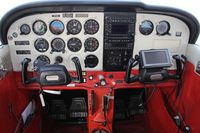Recently it was the 60th anniversary of LEO, the world’s first business computer—built by J.Lyons & Co, a leading British food manufacturer at the time that also ran a famous chain of tea shops.
Lyons management had long been keen to streamline their back-office operations. In 1947, two Lyons managers visited the U.S. to learn about the latest business processes, including whether the electronic computers they’d heard about during their wartime service, like ENIAC, might be useful. (At the time, the closer-to-home advances at Bletchley Park were still a well-kept military secret.)
They returned inspired by the possibilities and keen to build a machine of their own. After several years of development, LEO, a.k.a. Lyons Electronic Office, took on its first office job on November 17, 1951—weekly valuations for the bakery division, calculating margins on Lyon’s output of bread, cakes and pies.
Until LEO, computing in a work setting was treated like a specialist bit of kit on a factory production line. Each machine was dedicated to a single task. In essence, they were narrowly defined calculating machines. The vision for LEO, in contrast, was bravely broad. LEO was a single computer capable of handling a whole swathe of accounting and bookkeeping tasks, as well as producing daily management reports.
LEO was such a success that Lyons set up a commercial subsidiary to sell spare time on LEO to other businesses, including the Ford Motor Company, which used it to process the payroll for the thousands of workers at its U.K. plant. Later, Lyons also built entirely new LEOs and sold them to other blue-chip companies of the era. In total, more than 70 LEO’s were built, with the last remaining in service until the 1980’s (not bad for a computer that took up an entire room!).
Today we view IT as critical to any enterprise, but in the 1950s, this was by no means a given, as evidenced by a quote from a 1954 issue of The Economist: “There are those who do not believe in the desirability of introducing anything as esoteric as electronics into business routine.” Things certainly have changed, and in a sense, all modern day businesses owe a debt to the LEO team.
